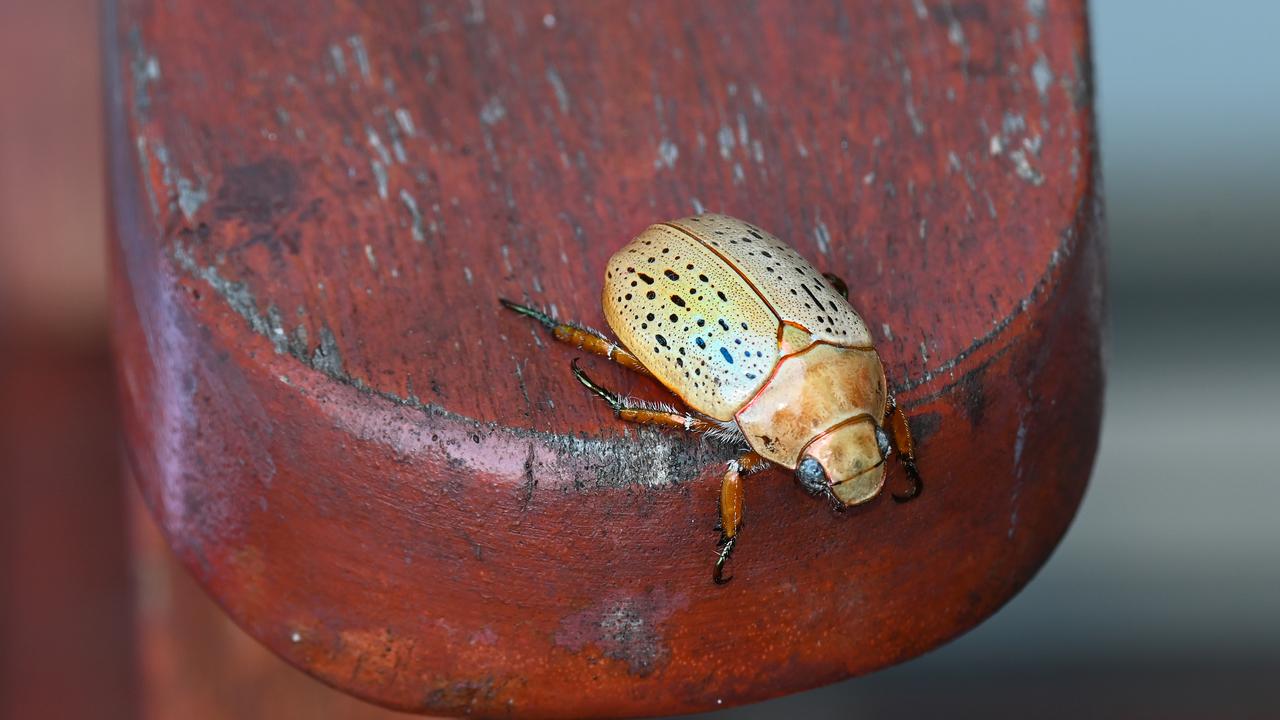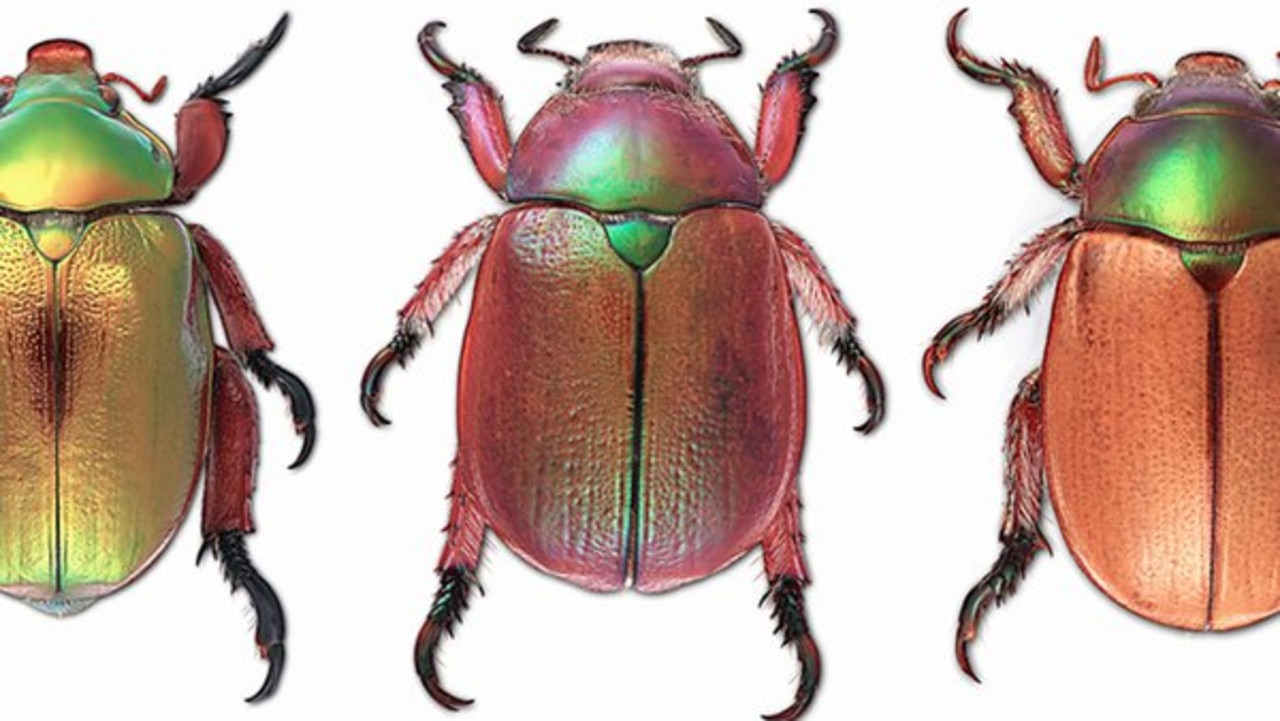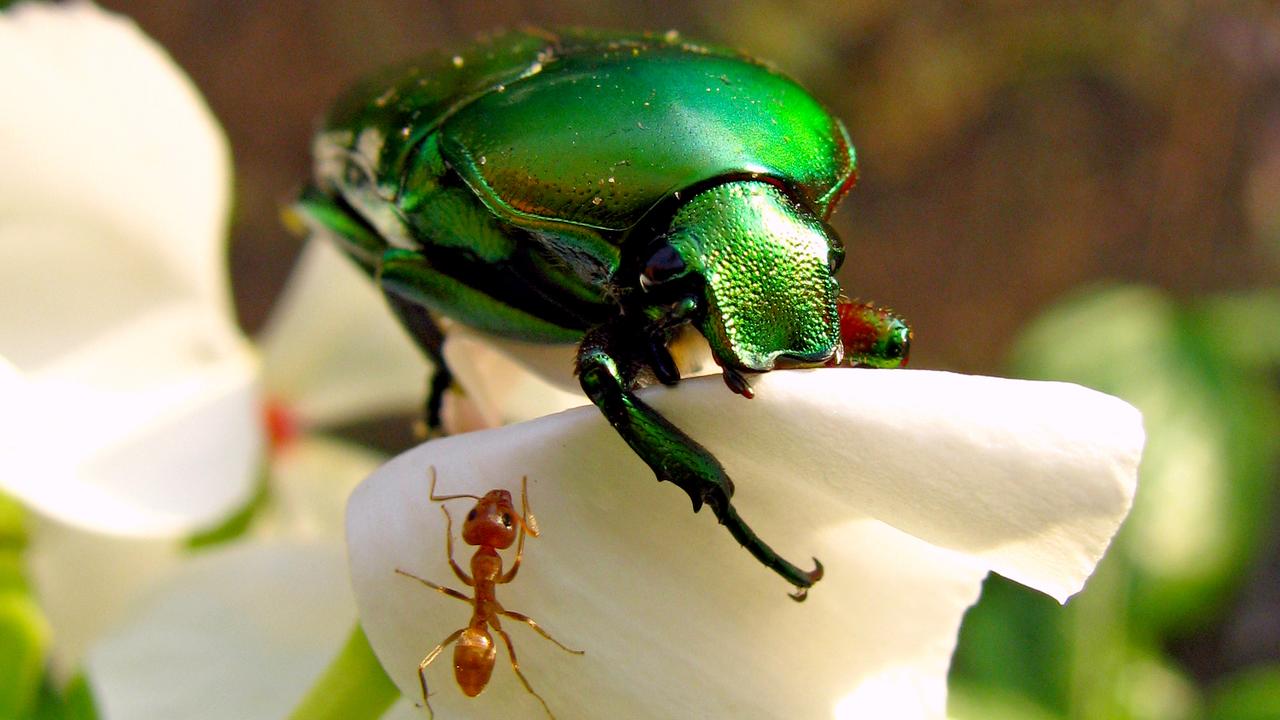‘Disappearing’: Fight to save iconic Australian insect
Many Aussies insist Christmas beetles are vanishing in huge numbers, but there’s something you can do to save the iconic insect.
Many Aussies swear up and down that the Christmases of their childhoods were marked by frenzied gift-giving around the tree, seafood lunches in the blistering heat and hordes of huge, iridescent Christmas beetles descending in their thousands.
The fat, festive beetles appear for just a few months around the Australian summer, lighting up the skies with their shiny wings.
But, at least according to anecdotal evidence, Christmas beetles no longer arrive in the same dazzling abundance.
A new research project needs your help to understand why.

What we know about Christmas beetle decline
Chris Reid, Principal Research Scientist at the Australian Museum, calls the evidence of Christmas beetle decline “anecdotal but compelling”.
“In the 1920s, they were reported to drown in huge numbers in Sydney Harbour, with tree branches bending into the water under the sheer weight of the massed beetles,” Dr Reid explained.
“You won’t see that these days, and I’ve never seen a Christmas beetle come to light where I work, next to Hyde Park. Public concerns suggest that numbers are also much smaller in the suburbs.”

Scientists don’t have long-term population data for any of the dozens of Christmas beetle species found in Australia, which makes it difficult to determine whether their numbers are reducing.
It’s believed Christmas beetles, like many insects, are threatened by habitat loss as urban sprawl takes over the once abundant greenery along the east coast.
The adults need eucalypt leaves, which are reducing in number, while the larvae — which stay buried in the ground for up to two years before their festive emergence — need the roots of grasses, presumably native ones.

What bug enthusiasts can do to help
Uncovering what’s happening to the Christmas beetles is critical to ensuring their survival.
To that end, Invertebrates Australia and the University of Sydney have launched the Christmas beetle Count, a community science project that calls on Aussies to report their encounters with Christmas beetles.
Sightings can be reported by the public to an online database. The subsequent data will be analysed by scientists to determine which Christmas beetle species are most at-risk of decline or extinction.

So far, the project looks promising. More than 8000 sightings have been submitted by more than 4000 people across Australia, including photos of four rare species that were last sighted decades ago, according to researchers behind the project.
For another species, a citizen scientist snapped the first known picture of a living individual, which was previously only known from a single dead specimen.
There were 532 “research grade” sightings of Christmas beetles between November 1 and December 8 – more than double than in the same period last year — though researchers say the increase is likely due to more people becoming aware of the project and taking part.

How to spot a Christmas beetle
Christmas beetles are found across most of Australia, but are most common along the east coast. They emerge in summer to seek out mates and munch on eucalyptus leaves, before laying new eggs underground to continue the life cycle.
There are 36 species of the bug, almost all of which are only found in Australia.
According to Dr Reid, the beetles are “are large and chunky, somewhat flattened in shape and [typically] with metallic brown, yellow or pink colours”. They come in other colours, too, like bright green or gold.
Importantly, people in Tasmania sometimes use the term “Christmas beetle” to refer to the golden stag beetle, but that’s not the guy we’re looking for.






